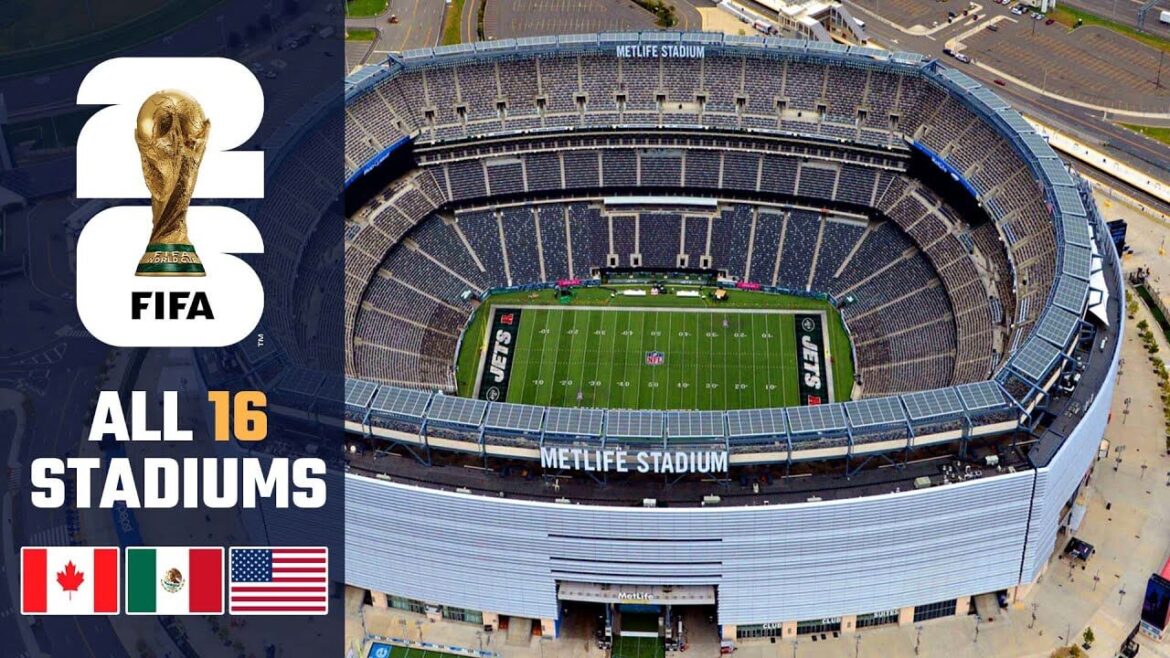As the global footballing community looks ahead, the unprecedented FIFA World Cup 2026 is poised to be a tournament of staggering scale and cultural fusion. Co-hosted for the first time by three nations—Canada, Mexico, and the United States—this landmark edition will feature an expanded 48-team format, necessitating a grander stage than ever before. The selected stadiums are more than just venues; they are iconic landmarks, architectural marvels, and the future crucibles of footballing legend.
The selection process was rigorous, culminating in 16 host cities chosen for their world-class infrastructure, passionate fan bases, and commitment to delivering an unparalleled experience. This transcontinental journey will take fans from the vibrant heart of Mexico, the historic cradle of World Cup football, to the bustling metropolises of the United States and the dynamic Canadian cities embracing the global game.
Here is the definitive guide to the 16 official stadiums that will host the FIFA World Cup 2026, based on the latest official data from FIFA.
Canada: The Northern Gateway
1. BMO Field (Toronto, Ontario)
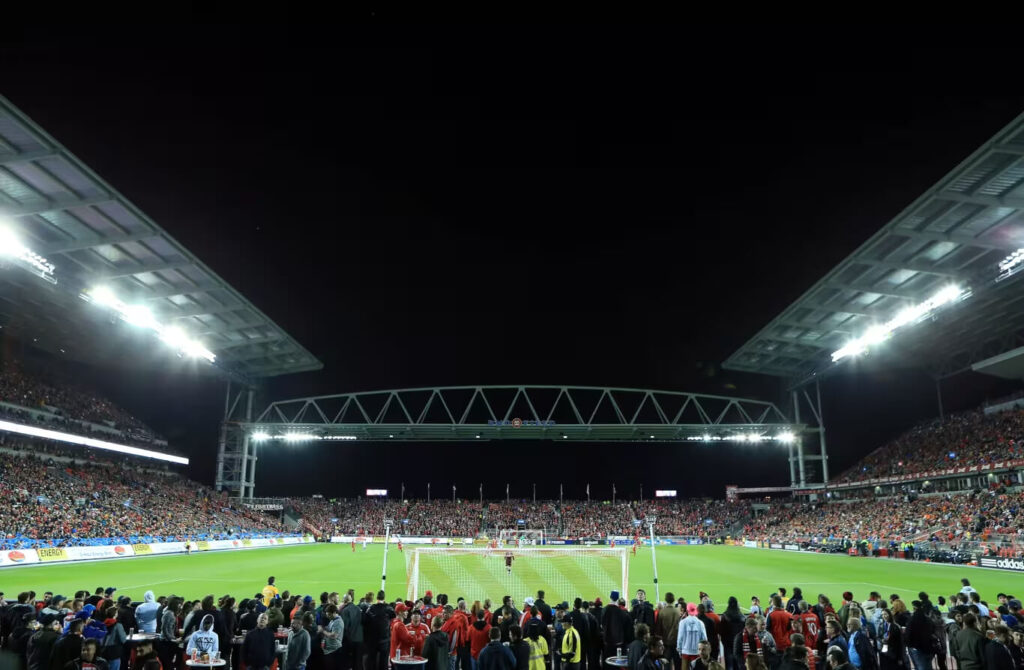
- Official Capacity for World Cup: To be confirmed (Stadium will be expanded).
- Location: Toronto, Ontario, Canada
- Architectural Vision: Originally by C/S Architects, with significant expansions and upgrades for the World Cup.
- A Deeper Dive: The primary soccer-specific stadium in Canada, BMO Field is set for major renovations to elevate it to a world-class standard. Nestled in the heart of Toronto at Exhibition Place, its urban setting offers exceptional accessibility. The intimate and passionate atmosphere generated by Toronto’s diverse fanbase will provide a stunning backdrop for the world’s game, marking a new chapter for Canadian football.
2. BC Place (Vancouver, British Columbia)
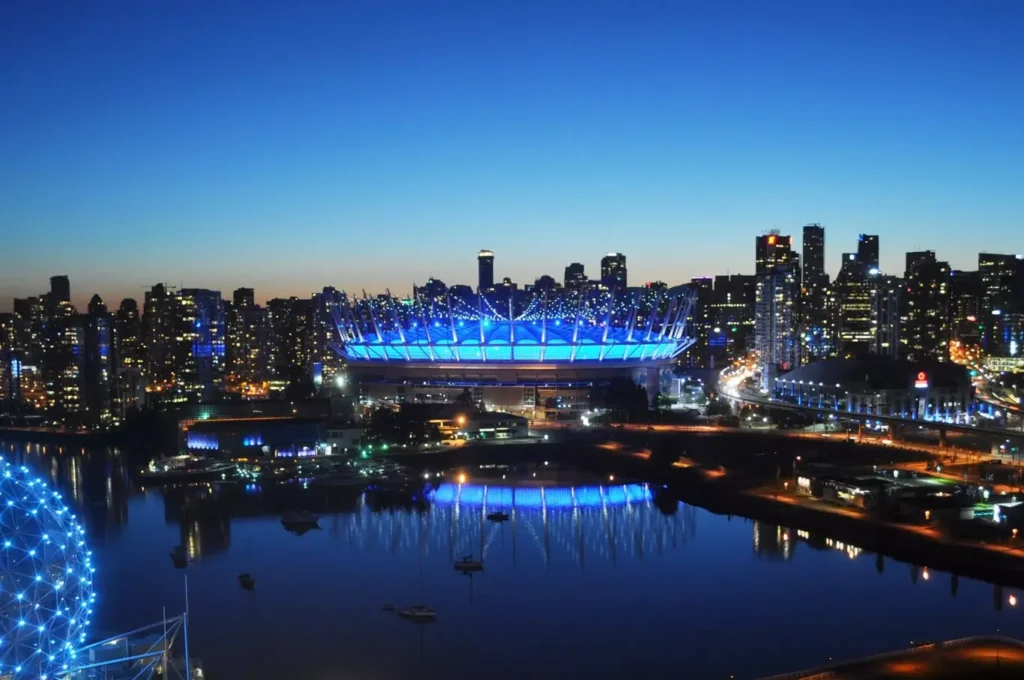
- Official Capacity for World Cup: To be confirmed.
- Location: Vancouver, British Columbia, Canada
- Architectural Vision: A landmark with a distinctive retractable roof, originally by Studio Phillips Barratt, Ltd. and later upgraded.
- A Deeper Dive: BC Place is an iconic feature of Vancouver’s skyline. Known for hosting major events like the 2010 Winter Olympics, its state-of-the-art facilities and climate-controlling roof make it a perfect venue for the World Cup. Situated in the vibrant downtown core, it will offer fans a breathtaking setting between the coast mountains and the Pacific Ocean, creating a stunning and memorable host environment.
Mexico: The Cradle of Legend
3. Estadio Akron (Guadalajara, Jalisco)

- Official Capacity for World Cup: To be confirmed.
- Location: Guadalajara, Jalisco, Mexico
- Architectural Vision: A collaborative modern design by HOK and ARTEC.
- A Deeper Dive: Home to C.D. Guadalajara (Chivas), this stadium is a masterpiece of contemporary design. As a host for the 2026 World Cup, it connects the tournament to Mexico’s rich footballing history, having been a venue in the 1970 and 1986 tournaments. Its unique architecture and the palpable passion of one of Mexico’s most iconic clubs will ensure an electric atmosphere.
4. Estadio BBVA (Guadalupe, Nuevo León)

- Official Capacity for World Cup: To be confirmed.
- Location: Guadalupe, Nuevo León, Mexico (Metropolitan area of Monterrey)
- Architectural Vision: A stunning modern design by Populous and VFOA.
- A Deeper Dive: Affectionately known as “El Gigante de Acero” (The Steel Giant), Estadio BBVA is a relatively new but instantly iconic venue. Its distinctive saddle-shaped roof and dramatic setting against the Cerro de la Silla mountain create a breathtaking backdrop. As the home of CF Monterrey, it brings a modern, state-of-the-art, and passionate football environment to the World Cup stage.
5. Estadio Azteca (Mexico City, Mexico)
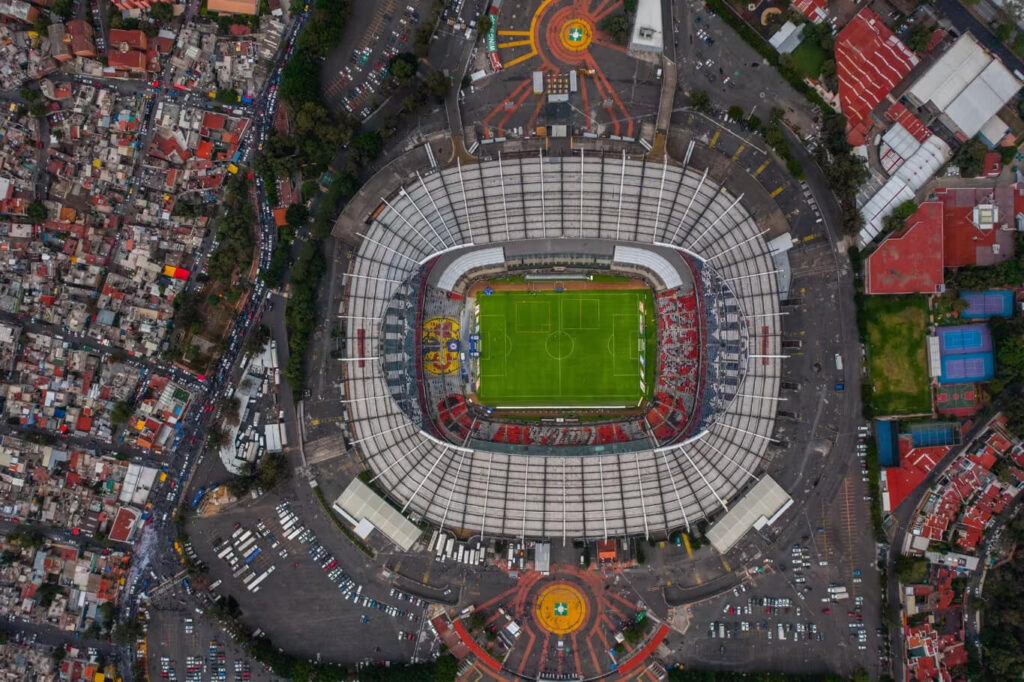
- Official Capacity for World Cup: To be confirmed (Undergoing renovation).
- Location: Mexico City, Mexico
- Architectural Vision: A legendary creation by architects Pedro Ramírez Vázquez and Rafael Mijares Alcérreca.
- A Deeper Dive: The hallowed Estadio Azteca is not just a stadium; it is footballing sanctuary. It is the only stadium in history to host two World Cup Finals (1970 and 1986), witnessing the brilliance of Pelé and Maradona. Its sheer magnitude and historical weight are unparalleled. For the 2026 tournament, the Azteca will be magnificently renovated, ready to write a new chapter in its legendary story and offer a new generation a pilgrimage to the heart of football’s history.
United States: A Coast-to-Coast Spectacle
6. Mercedes-Benz Stadium (Atlanta, Georgia)

- Official Capacity for World Cup: To be confirmed.
- Location: Atlanta, Georgia, USA
- Architectural Vision: A groundbreaking design by HOK and 360 Architecture.
- A Deeper Dive: Instantly recognizable by its revolutionary retractable “pinwheel” roof, this stadium is a marvel of modern engineering. Its 360-degree “halo” video board and fan-first amenities create an immersive experience. As a cornerstone of Atlanta’s vibrant sports scene, it is a prime candidate to host the deepest stages of the tournament.
7. Gillette Stadium (Foxborough, Massachusetts)

- Official Capacity for World Cup: To be confirmed.
- Location: Foxborough, Massachusetts, USA
- Architectural Vision: Designed by Populous for a classic, fan-intimate experience.
- A Deeper Dive: A well-established and celebrated venue in the Northeast, Gillette Stadium is home to the New England Revolution of MLS. Its proximity to the major hub of Boston, combined with a passionate and knowledgeable fanbase, guarantees a lively and authentic American soccer atmosphere.
8. NRG Stadium (Houston, Texas)
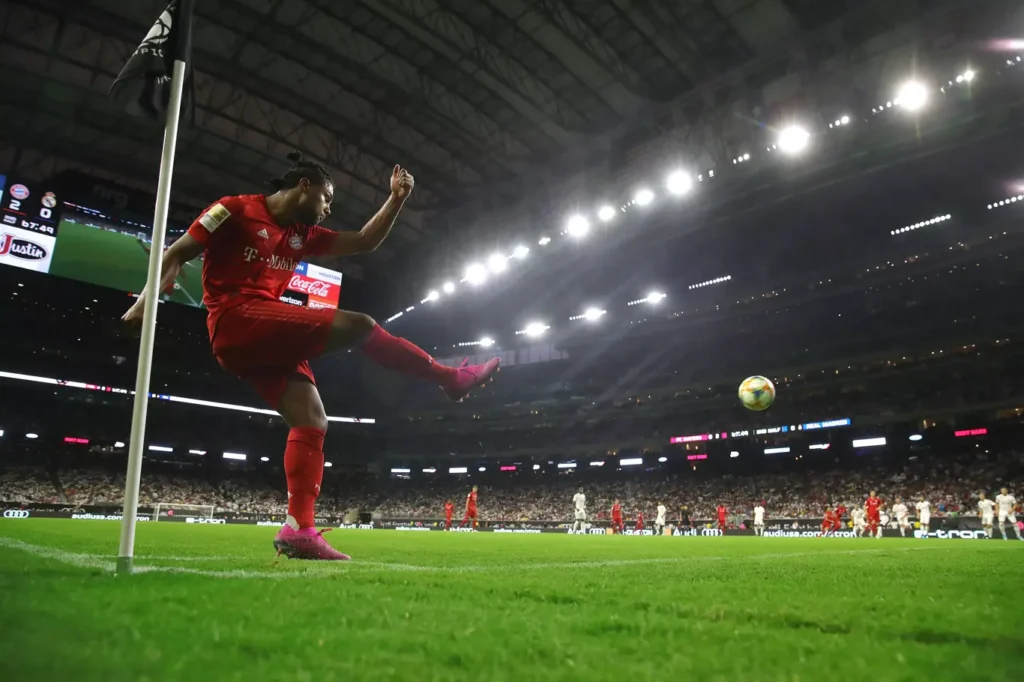
- Official Capacity for World Cup: To be confirmed.
- Location: Houston, Texas, USA
- Architectural Vision: Designed by 360 Architecture with a retractable roof.
- A Deeper Dive: A veteran of major events like the Super Bowl, NRG Stadium is perfectly equipped for the global spectacle. Its climate-controlled environment ensures ideal playing conditions regardless of the Houston heat. The city’s incredible cultural diversity will be reflected in the stadium, offering a uniquely global and energetic celebration of football.
9. Arrowhead Stadium (Kansas City, Missouri)

- Official Capacity for World Cup: To be confirmed.
- Location: Kansas City, Missouri, USA
- Architectural Vision: A classic by Kivett & Myers, significantly enhanced by renovations from Populous.
- A Deeper Dive: Renowned for holding the Guinness World Record for the loudest stadium in the world, Arrowhead promises an absolutely deafening and intimidating atmosphere. The passionate Kansas City fanbase, combined with recent modernizing renovations, will create one of the most electrifying and memorable environments of the entire tournament.
10. SoFi Stadium (Inglewood, California)

- Official Capacity for World Cup: To be confirmed.
- Location: Inglewood, California, USA
- Architectural Vision: A breathtakingly futuristic design by HKS Architects.
- A Deeper Dive: SoFi Stadium is the pinnacle of modern sports architecture. Its translucent, canopy-like roof, immense oval video board, and sleek aesthetic create an unparalleled, immersive experience. As a centerpiece of the Los Angeles sports landscape, it is destined to be a flagship venue for the World Cup, showcasing the future of live events.
11. AT&T Stadium (Arlington, Texas)
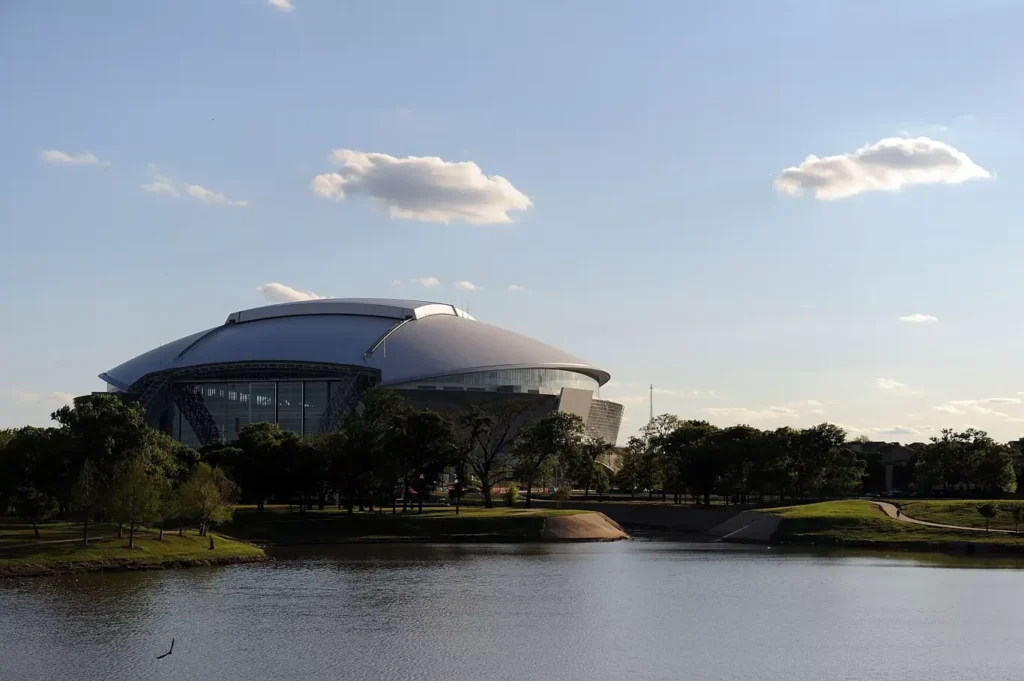
- Official Capacity for World Cup: To be confirmed (Expandable to over 100,000).
- Location: Arlington, Texas, USA
- Architectural Vision: A colossal creation by HKS, Inc.
- A Deeper Dive: Often called “Jerry’s World,” this architectural behemoth is defined by its immense scale and technological opulence, including the world’s largest HD video board. Its ability to expand its capacity to over 100,000 makes it a natural candidate to host the Final, offering a stage of truly epic proportions befitting the world’s biggest game.
12. Lincoln Financial Field (Philadelphia, Pennsylvania)
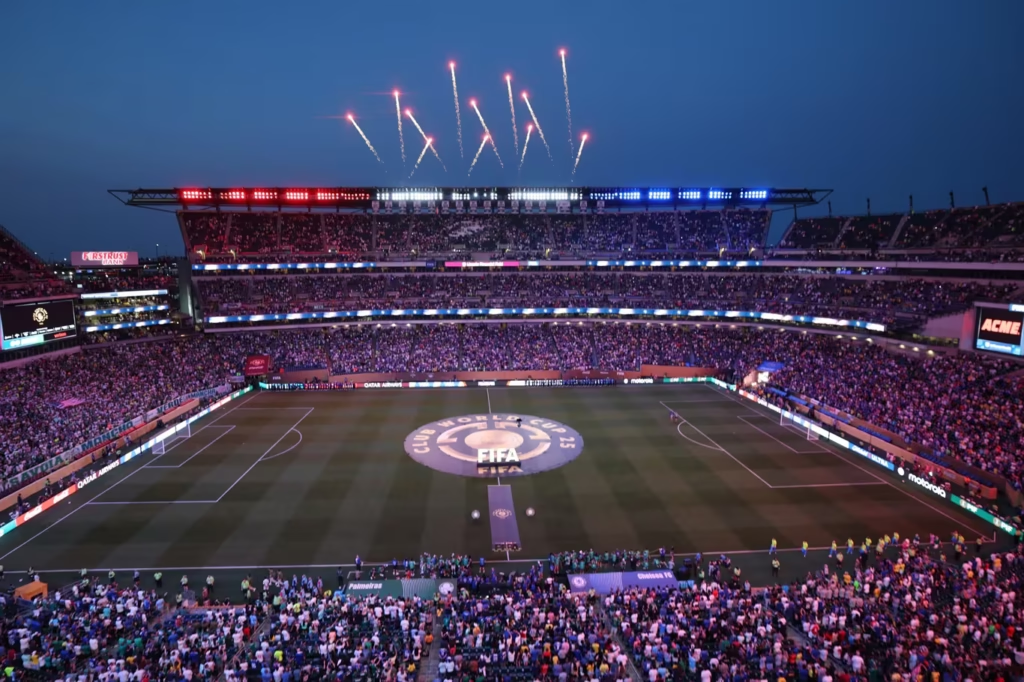
- Official Capacity for World Cup: To be confirmed.
- Location: Philadelphia, Pennsylvania, USA
- Architectural Vision: A modern and intimidating design by Nestor/Fernandez & Aedifex.
- A Deeper Dive: Embedded in a city known for its passionate and demanding sports culture, “The Linc” provides a state-of-the-art, raucous environment. Its excellent location and robust infrastructure are perfectly suited to host pivotal matches, channeling the intense energy of Philadelphia onto the global stage.
13. Lumen Field (Seattle, Washington)

- Official Capacity for World Cup: To be confirmed.
- Location: Seattle, Washington, USA
- Architectural Vision: Designed by LMN Architects for an open-air, fan-centric experience.
- A Deeper Dive: Famous for its seismic crowd noise and the passionate “12th Man,” Lumen Field offers one of the most authentic and intimidating soccer atmospheres in North America. The stadium’s design amplifies the sound, guaranteeing a thrilling, visceral experience for players and fans alike.
14. Levi’s® Stadium (Santa Clara, California)
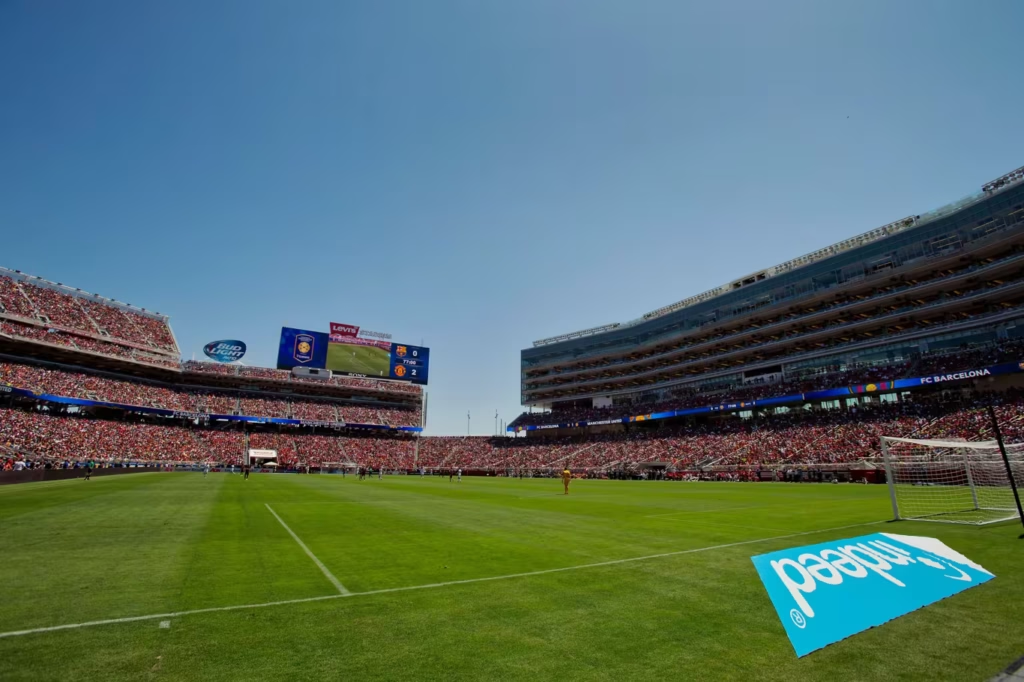
- Official Capacity for World Cup: To be confirmed.
- Location: Santa Clara, California, USA
- Architectural Vision: A forward-thinking, sustainable design by HNTB Architecture.
- A Deeper Dive: Located in the heart of Silicon Valley, Levi’s® Stadium is a beacon of technological innovation and environmental responsibility. Its eco-friendly features, like a green roof and solar panels, offer a glimpse into the future of stadium design, providing a modern and sophisticated stage for the world’s game.
15. Hard Rock Stadium (Miami Gardens, Florida)
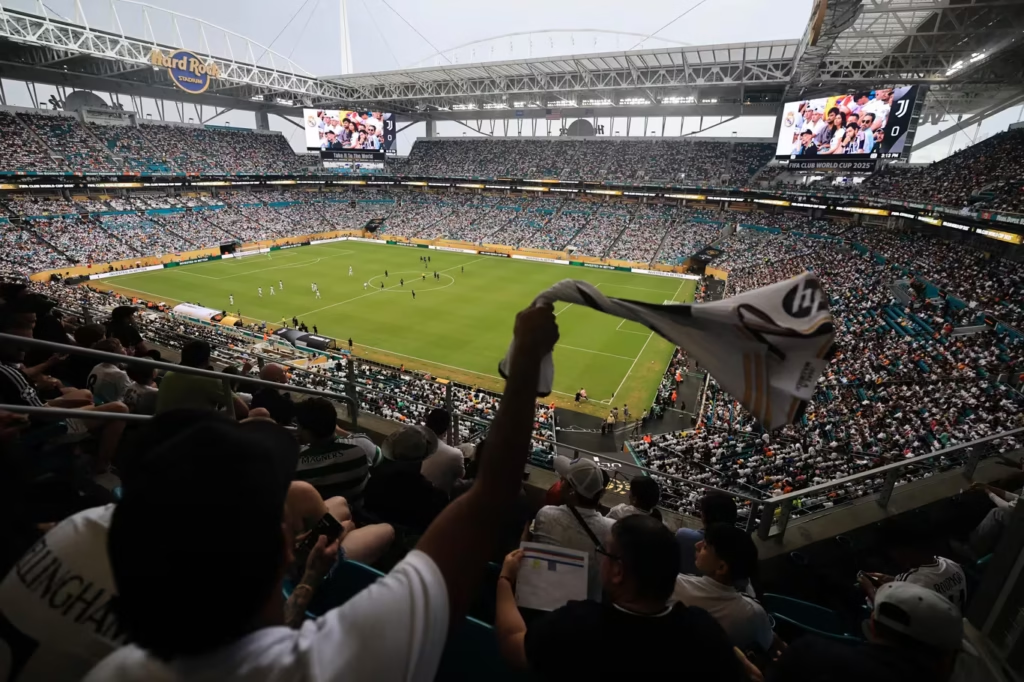
- Official Capacity for World Cup: To be confirmed.
- Location: Miami Gardens, Florida, USA
- Architectural Vision: Transformed into a vibrant, modern hub by renovations from HOK.
- A Deeper Dive: Situated in the cultural crossroads of South Florida, Hard Rock Stadium embodies the glamour and energy of Miami. Its recent renovations, sleek design, and palm-lined setting promise to bring a unique, tropical flair to the World Cup, making it a highly desirable destination for fans.
16. MetLife Stadium (East Rutherford, New Jersey)
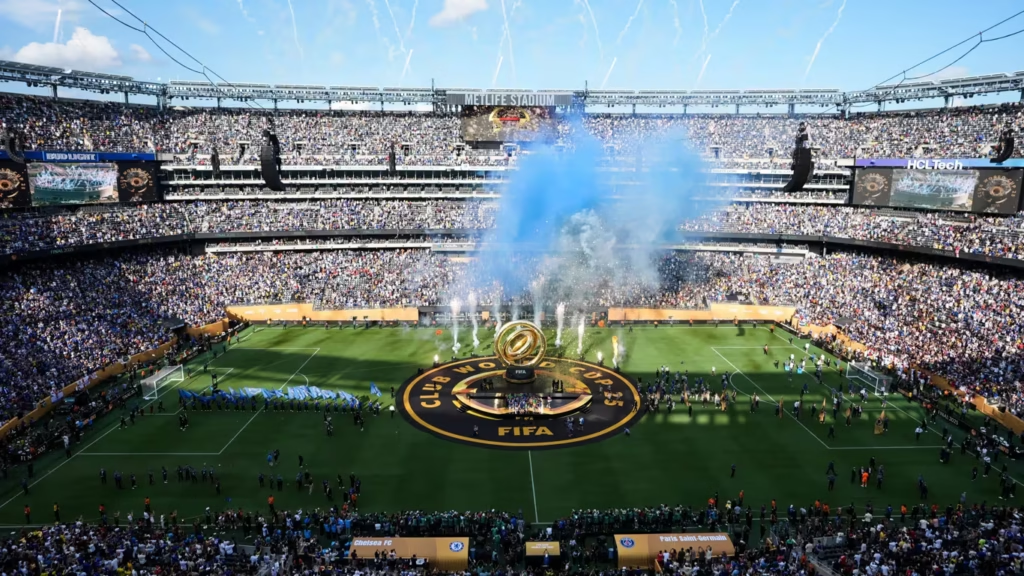
- Official Capacity for World Cup: To be confirmed.
- Location: East Rutherford, New Jersey, USA
- Architectural Vision: A collaborative design by Skidmore, Owings & Merrill (SOM) and 360 Architecture.
- A Deeper Dive: Serving the massive New York City metropolitan area, MetLife Stadium is a modern giant built for premier events. Its scale, superior amenities, and proximity to the world’s media capital make it a logical and formidable host for critical matches throughout the tournament, ensuring a global spotlight.
The FIFA World Cup 2026 will be a journey like no other, a transcontinental celebration of football. From the historic echoes of the Azteca to the futuristic marvels of SoFi and AT&T Stadium, these 16 venues are the grand stages upon which a new generation of legends will be born. Prepare for a tournament that will be as monumental for its geography as for the beautiful game played within these iconic walls.
